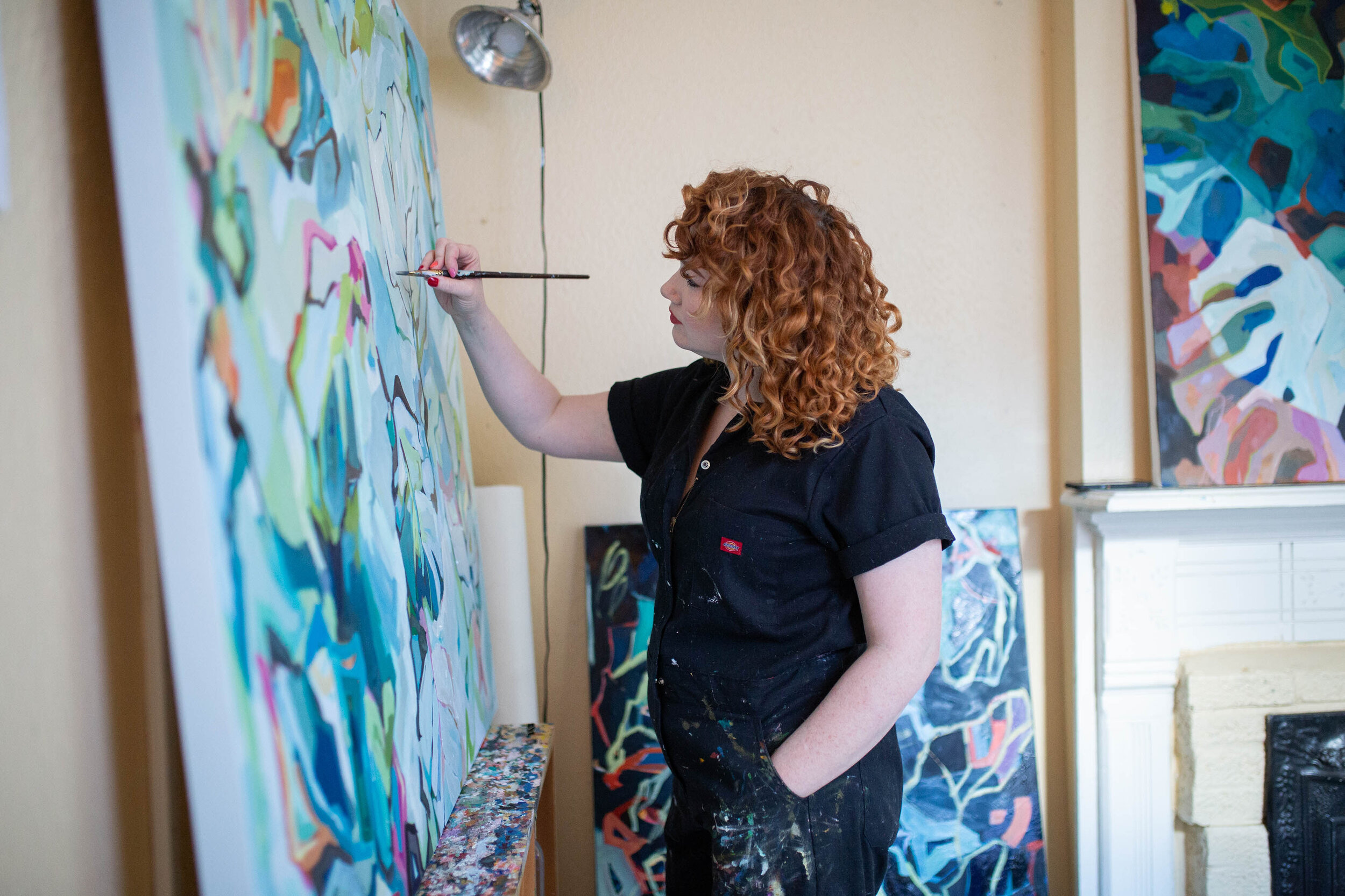Looking into a commission? Here’s what you need to know.
I have so many questions, is that normal?
Short answer: YES
Having a custom piece of artwork in your space can be a rewarding source of joy for art lovers and collectors. After all YOU, the collector, chose elements of the work yourself. It’s a personal and memorable process that can also be full unknowns. Some of the questions running through your head might be: How long will it take? How much will it cost? How much input will I have into the final product? I can tell you every artists’ methods are different. These methods are likely the result of years of experience with the commission process. An open line of communication is key to answering your questions and peeling away some of the mystery surrounding commissions. Thats why I’ve set up my Commissions 101 page, available upon request.
What I’ve learned as an artist.
Three years ago commissions were somewhat a source of anxiety for me. I was a young artist with no method for handling commissions. I said yes to projects when I had no clue how to finish them. I delivered projects later than I wanted to. I agonized over how to finish them.
They are intrinsically a very different part of the artistic process for me. Typically when I enter the studio, I have no idea how the works in progress will shape up. I let the painting itself inform me as I move through the day. I may or may not stick to a specific color palette. I might paint over it completely. Commissions are a different animal. The end goal is clearly defined and agreed upon before a brush ever touches the canvas. They are not the time to experiment or suddenly reach for the cadmium red because you feel like it. The goal is defined. Boundaries are set.
I used to think the boundaries would be stifling. I was afriad of inhibiting my artistic spirit. I think those fears were really my inexperience as a professional artist. As i’ve navigated my career, I have actually found this process to be empowering. I can walk into the studio knowing exactly what is expected of me and how to finish it. There is a sense of freedom now in accomplishing a goal that the client and I set together.
A recent commission.
Here I’m adding the finishing touches to a 48x60in commission before shipping it to Bee Street Gallery in Dallas, Texas.
When to hire an artist to create a commission?
I’ve found, Scale tends to be a great motivator. You won’t always find the perfect painting for your space out there or in my inventory. What if you fall in love with a painting that’s 30x40in but need piece that is 48x72in to fill the space?
Another motivator might be color? What if piece feels right in every way but ONE color just doesn't work for you. I recently finished a pair of commissions for a client in Austin, Texas that reached out via Instagram. She loved a painting I created named, “Feel it Out.” This was a vibrant painting I made in the beginning of 2019 (sold through Claire Elizabeth Gallery, at a larger scale, 48x48in with pinks and salmon colors swirling around the subject. My Austin client wanted two 20x20in pieces based on this painting. The catch was, no pinks. I ending up playing with more warm tones ochre, golden yellow and a hint of salmon to create these commissions. The results were fantastic!
The Inspiration
“Feel it Out” 48x48in oil on canvas. 2019.
I’ve created my Commissions 101 page to answer more in depth questions and highlight the process. Reach out to request access to view this page, including pricing.
Some advice from industry professionals:
Expect to pay about a 50 percent deposit on your piece. “Get the artist to tell you up front what the price is,” Fenimore says.
Know that the level of detail will impact price. “Some [work] is really labor intensive and some is not. It depends on the medium,” says designer Sarah Hargrave.
Each case is different, but expect about an eight- to 12-week production process. “Set up open communication with the artist,” says gallery manager Christopher Huffman.
Don’t be afraid to let go. “You have to let go and let people do what they’re good at,” says designer Abbe Fenimore. “You were attracted to their work for a reason.”


